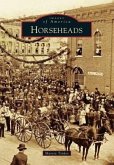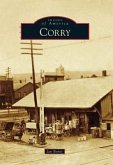Dating back to 1686, Rhinebeck is one of New York's earliest towns. The Beekman Arms, America's oldest inn, and a Palatine farmhouse, the oldest surviving structure of German origin in the country, are only two of Rhinebeck's many treasures. Commerce developed due to the town's ideal location along the Hudson River and the Albany Post Road. In the late 19th and early 20th centuries, agriculture thrived and Rhinebeck became known as the "violet capital of the world" as well as the home of the Ankony Angus cattle herd. The wealthy were attracted by magnificent views of the Catskills and Rhinebeck's unspoiled rural character. Grand estate owners Vincent Astor, Anna L. and Levi P. Morton, and Robert Suckley also built the Astor Home for Children, the Morton Memorial Library, and the Church of the Messiah. These landmarks stand today as a tribute to their generosity and as evidence for residents and visitors of their keen interest in local affairs.
Hinweis: Dieser Artikel kann nur an eine deutsche Lieferadresse ausgeliefert werden.
Hinweis: Dieser Artikel kann nur an eine deutsche Lieferadresse ausgeliefert werden.








